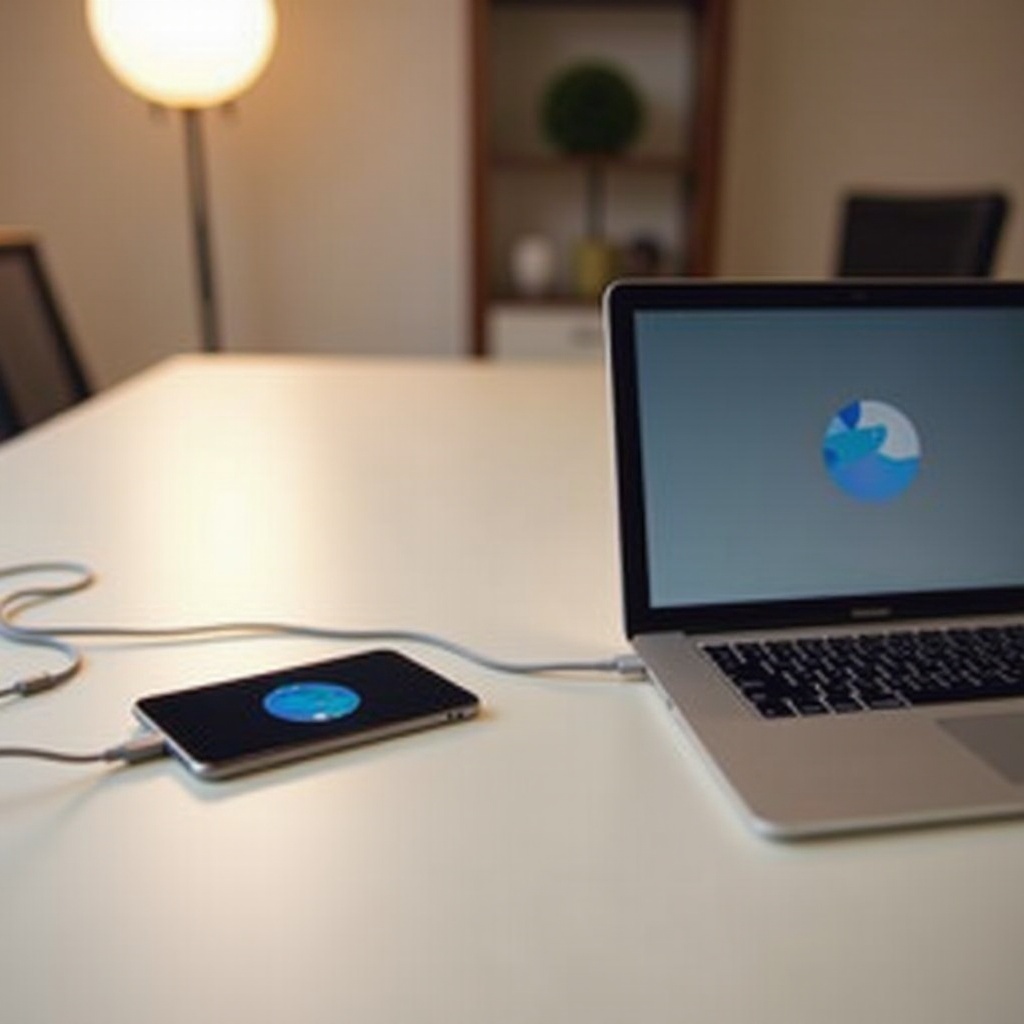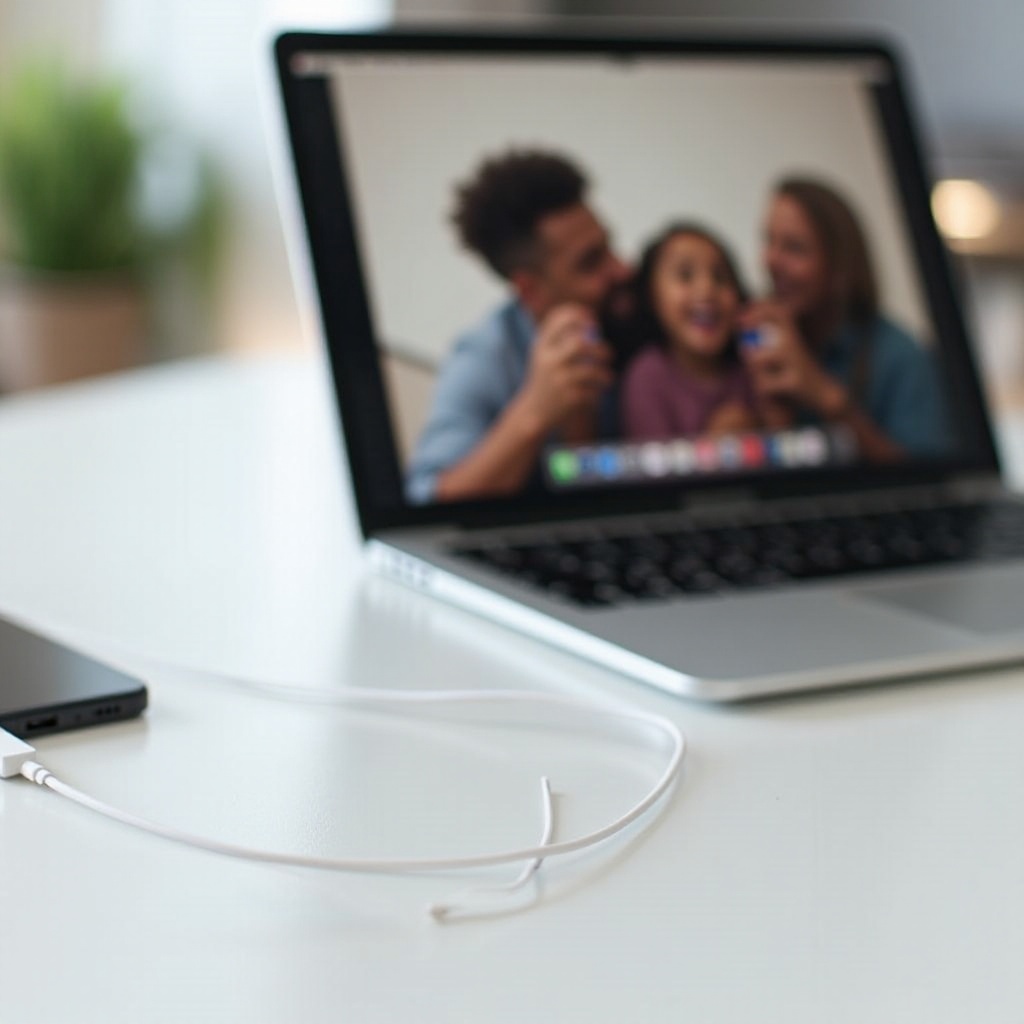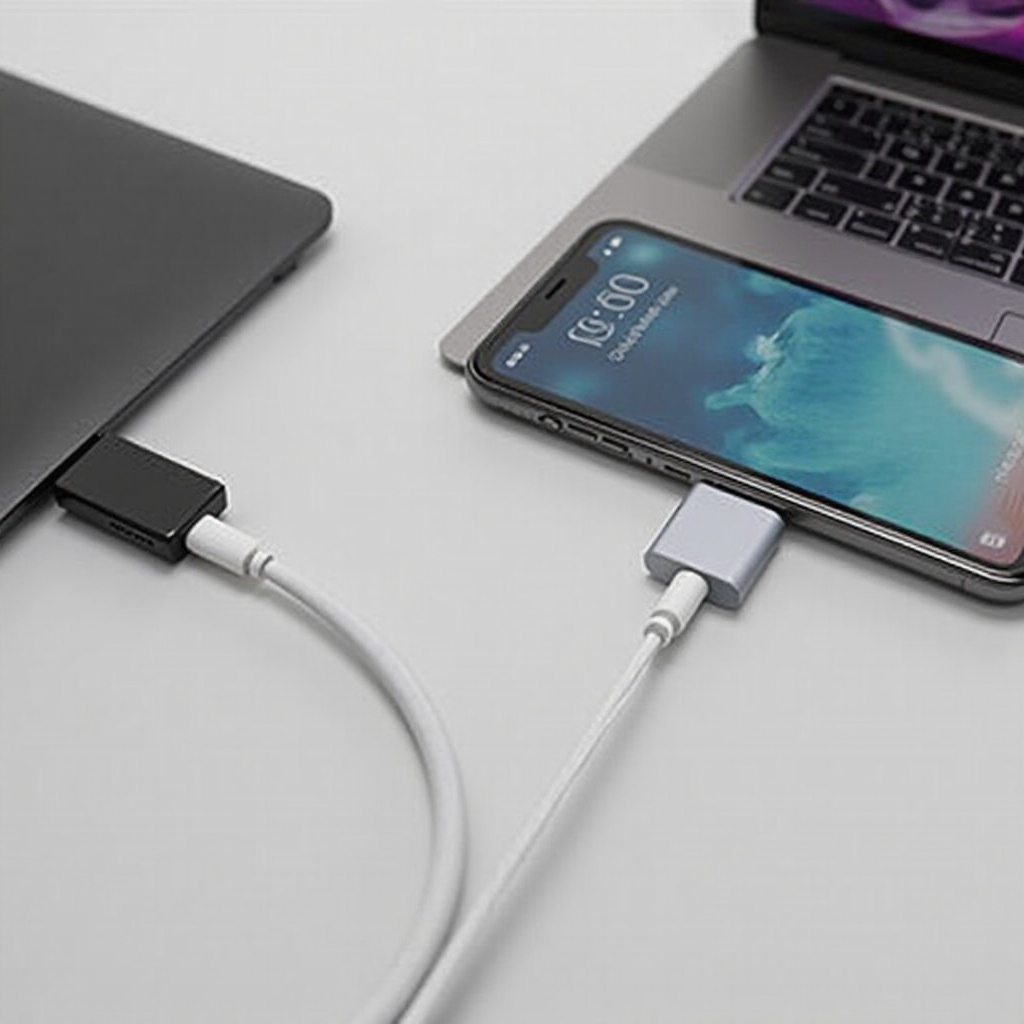Introduction
Mirroring your iPhone screen to a MacBook can unleash a host of functionalities that elevate your productivity and entertainment levels. Whether it’s to view photos on a larger screen, play games, or present information at a meeting, knowing how to connect these two beloved Apple devices via a wired connection is invaluable. This comprehensive guide walks you through the steps for a successful wired connection between your iPhone and MacBook, ensuring you can maximize the potential of both devices.
A stable wired connection eliminates concerns about lag and interference common in wireless methods. This guide delves into the required equipment, step-by-step procedures, troubleshooting techniques, and alternative solutions. By the end, you’ll be well-versed in everything you need to cast your iPhone to your MacBook using a wired connection.

Understanding Wired Screen Mirroring
Wired screen mirroring involves replicating the display from your iPhone onto a MacBook using a physical cable and specific software. Unlike wireless mirroring, a wired connection ensures a stable, high-quality transmission of both video and audio signals. This process is especially useful in environments with poor wireless connectivity.
To accomplish this feat, you typically use a Lightning-to-USB cable paired with screen mirroring software like QuickTime Player. This combination ensures that your MacBook can read and replicate the screen from your iPhone accurately. Wired screen mirroring is advantageous for scenarios such as live presentations, gaming, or detailed app demonstrations where every pixel and sound byte counts.
Arming yourself with knowledge of the necessary tools and steps to set up a wired connection ensures a seamless experience. Next, let’s move on to what equipment you’ll need for this process.

Required Equipment
Before diving into the screen mirroring steps, let’s ensure you have all the gear handy:
- iPhone: Ensure it’s running on the latest iOS version.
- MacBook: Updated with the latest MacOS.
- Lightning to USB Cable: Essential for connecting the iPhone to the MacBook.
- QuickTime Player: The pre-installed app on MacBooks that facilitates screen recording and mirroring.
With your equipment in hand, you’re ready to start the process. Let’s delve into the step-by-step guide for casting your iPhone to your MacBook.
Step-by-Step Guide to Casting Your iPhone to Your MacBook
Connecting Your Devices
- Use the Lightning to USB Cable: Connect your iPhone to your MacBook using the cable. Make sure the connection is snug to avoid any disconnections during the mirroring process.
- Trust the Computer: Upon connecting, your iPhone will prompt you to ‘Trust This Computer.’ Tap ‘Trust’ and, if necessary, enter your device’s passcode.
Enabling Screen Mirroring on iPhone
- Open QuickTime Player: Navigate to your Applications folder and open QuickTime Player on your MacBook.
- Select ‘New Movie Recording’: From the QuickTime Player menu, go to ‘File’ and select ‘New Movie Recording.’
- Choose iPhone as Source: A new window will appear. Click the downward-facing arrow next to the record button and select your iPhone as the movie recording source. Your iPhone screen should now appear on the MacBook.
Configuring Settings on MacBook
- Adjust Recording Settings: If you wish to record the session, ensure that the video and audio sources are set to your iPhone.
- Full-Screen Mode: To maximize the display, click the green button to enter full-screen mode, providing an immersive viewing experience.
- Resolution Settings: Adjust resolution settings if needed to ensure the highest quality display.
Once the setup is complete, your iPhone will be mirrored to your MacBook screen, ready for any desired activity. Let’s now troubleshoot some common issues you might face during this process.
Troubleshooting Common Issues
Connection Problems and Solutions
Connectivity issues can interrupt the mirroring process:
- Faulty Cable: Ensure your Lightning to USB cable is fully functional. Test it with data transfer to rule out any cable issues.
- Software Updates: Both devices should have the latest software updates installed. Outdated software can impede the connection.
- Restart Devices: If connection issues persist, restart both your iPhone and MacBook to reset the connection and try again.
Display and Audio Synchronization Fixes
Sometimes the mirrored screen may encounter synchronization issues between video and audio:
- Close Background Applications: Make sure no other applications are running in the background that might interfere with QuickTime Player.
- Audio Source Settings: Verify that the audio source selected in QuickTime Player is your iPhone.
- Reconnect Devices: Disconnect and reconnect your iPhone to reset the mirroring session, addressing any sync issues.
In case wired mirroring doesn’t work for you, there are alternative solutions worth considering.

Alternative Screen Mirroring Solutions
If you face ongoing issues with a wired connection, several wireless alternatives can serve as a substitute:
- AirPlay: This built-in Apple feature enables seamless wireless screen mirroring between iOS and macOS devices over a Wi-Fi network.
- Third-Party Apps: Applications such as Reflector, ApowerMirror, and Mirroring360 provide both wired and wireless mirroring options with added functionalities.
- Apple TV: Using an Apple TV gives you the freedom to mirror your screen to a larger display if a MacBook is unavailable.
Understanding multiple methods ensures you have a backup plan if the wired route encounters unforeseen issues.
Conclusion
Knowing how to cast your iPhone to your MacBook using a wired connection provides a reliable solution for screen mirroring. By following the step-by-step guide outlined here and using the troubleshooting tips, you can ensure a seamless experience. Whether you’re showcasing a presentation, gaming, or enjoying media, wired connections offer the stability and quality you need.
Frequently Asked Questions
How can I improve the quality of my mirrored screen?
Ensure both devices have the latest updates and use a high-quality Lightning to USB cable for the best display quality.
Can I use third-party applications for wired screen mirroring?
Yes, applications such as Reflector and ApowerMirror offer alternative wired mirroring solutions with various additional features.
What should I do if my devices are not connecting?
Verify that both devices are updated, the cable is functional, and try restarting both devices to reset the connection.
